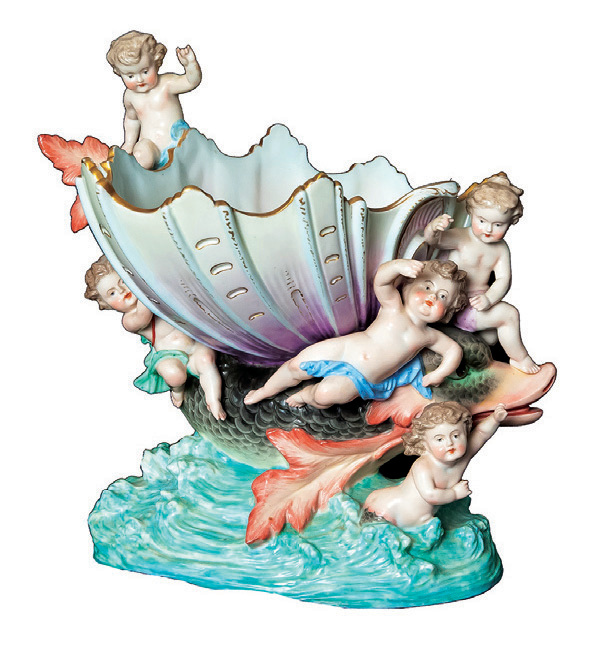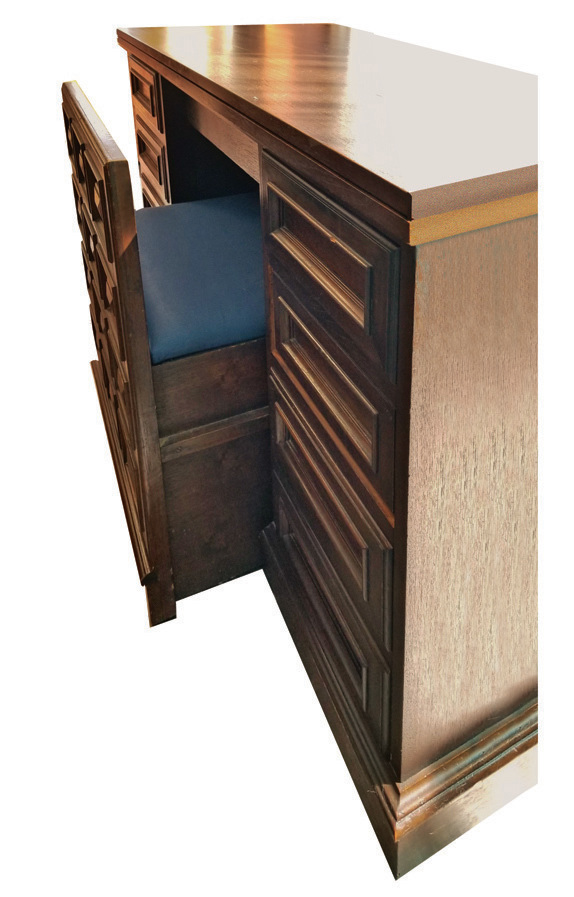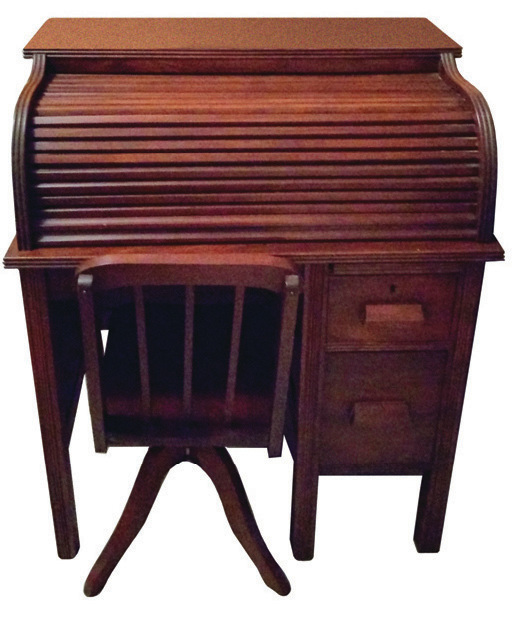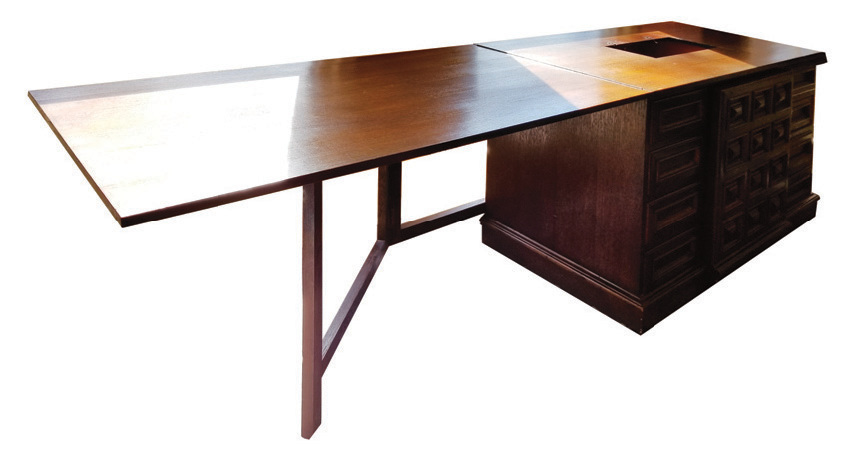Many thanks to Yawanna Pei Houmuch (You Want to Pay How Much?) for filling in for me last month. My shoulder surgery was no April Fool’s joke!

Dear Connie Sue,
I met your husband, Mel, years ago when we were both members of the Plowhaus Art co-op in East Nashville. This piece came from my mother-in-law and has been passed down through the family. No one knows anything about it. It is very unusual and bizarre. The only marking I can find on it is what appears to be “No. 176” and the number 2 below that. The piece is basically 12 by 11 by 11.5 inches.
If it sparks your curiosity the way it has mine, maybe you’ll have some luck.
— Dirk, La Vergne
Dear Dirk,
I found a 2015 sale of the same shell form of cherubs playing in the sea atop a fish. After 12 bids, it brought $250. The coloring was similar. The finish was bisque unglazed porcelain. Yours is glazed with over-paint decoration. The mark on the sold centerpiece was Russian. And this may be the country of origin of your cavorting cherubs. I cannot confirm. Value would be similar. The heavy gold and slightly granular finish indicates mid- to third-quarter 20th century.
The piece aspires to the fine workmanship of early porcelain artists in France and Germany. They marked their work clearly.
Dear Connie Sue,
I enjoy your column every month in The Tennessee Magazine. This child-size desk and chair have been in my family for many years. I know it was purchased in the early to mid-1930s. It’s in excellent condition. What has me stumped is there are no markings anywhere that show the name and location of the furniture company. Do you have any ideas? And if so, what do you think it might be worth? Thanks so much.
— Kathy, Adamsville
Dear Kathy,
I agree that your desk was made after 1930 and as late as 1950. It may have had a paper label tenuously attached. Similar antique child’s desks are bought by grandparents. They tend to sell for $75 to $145 at antique shops and for less at estate sales. The precious little chair is a sale clencher.
Dear Connie Sue,
Can you tell me anything about this sewing cabinet? My dad bought it from a lady in Huntsville. As I recall, she told us it may have made its way to Huntsville with the influx of Germans for the space industry in the ’50s. It looks like there may be a Star of David stamp on the inside of the chair with letters in the center.
The chair fits into and becomes the front of a case piece to disguise the functionality. The top hinges up to produce 8 inches of work surface. There are drawers flanking the chair. It has become a family treasure for me. I use it for my sewing table.
— Frances

Dear Frances,
Your sewing machine cabinet with lift-up top and pull-out chair is gorgeous. It could easily serve as a buffet or server for the dining room. The recessed, layered front appears to be oak with an assortment of functional secondary woods. The proudly stamped Star of David may well mean it was owned or shipped here by immigrants. I used every combination of letters but failed to confirm the maker. The vague stamp makes me think the company was short-lived — maybe joined with a larger group to continue producing fine furniture.
Based on construction and style, it was made circa-1950. Multiuse sewing cabinets were made for Singer and Pfatt around that time. I should think you paid around $450 for the piece 10 years ago, and it has held that value for cleverness and functionality.




